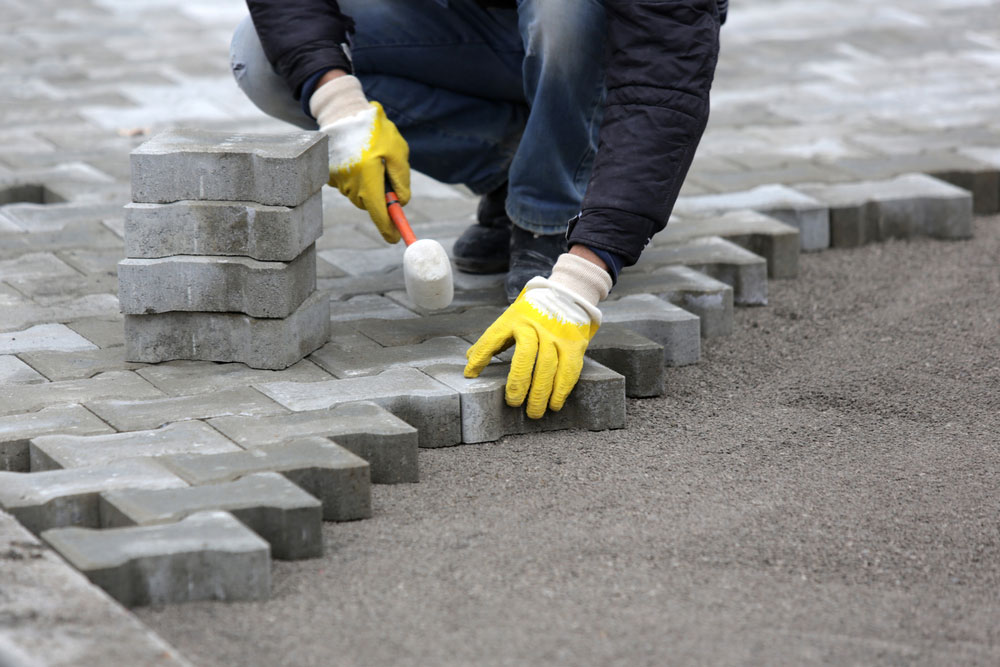When considering a stamped concrete installation, it’s essential to consider a few key factors before choosing to do it yourself or hiring a professional.
If your project features complex designs or requires special tools, you might encounter challenges affecting your ability to complete it successfully.
It’s not just about having the right materials; achieving a high-quality finish can be more complicated than it appears.
By understanding these elements, you can make more informed decisions about your project and avoid common mistakes. So, what should you consider as you move forward?
Complexity of the Project
Design and Pattern Planning
Stamped concrete installation is more than just pouring concrete and adding a stamp. You’ll need to consider design choices, color options, and patterns, all of which require detailed planning and execution to ensure the finished product aligns with your vision.
- Design Customization: Multiple design and colour options.
- Pattern Precision: Achieving the desired effect takes expertise.
Site Preparation and Conditions
Proper grading and leveling of the site are essential to avoid future issues like cracking or water pooling. These tasks can be labour-intensive and require precision, alongside considerations for weather conditions, which can impact the curing process of the concrete.
- Ground Preparation: Essential for avoiding future damage.
- Weather Awareness: Temperature and humidity affect curing.
Timing and Coordination
The installation process involves multiple stages that must be perfectly coordinated, from mixing the concrete to applying stamps and sealers. Mistakes in this process can lead to costly repairs, so careful attention to timing is crucial.
- Coordinated Stages: Each step needs precise timing.
- Professional Expertise: Avoid costly errors with a trained contractor.
Experience and Skill Level
Expertise and Skill Level
The experience and skill level of the installer play a critical role in the success of your stamped concrete project. It’s essential to hire someone who has hands-on experience with the various techniques required for optimal results.
- Knowledge of Materials: Skilled installers know how to handle the materials effectively.
- Achieving Desired Patterns: A seasoned professional understands how to create textures and patterns that meet your vision.
Specific Skills for Stamped Concrete
Stamped concrete is not a typical installation process. It requires specific skills to achieve a flawless result, especially during the initial stages when the concrete is in its plastic state.
- Working with Fresh Concrete: An experienced installer knows how to manage the material while it’s still malleable.
- Problem-Solving Ability: They can troubleshoot any issues on-site, preventing costly mistakes that can arise from inexperience.
Assessing the Installer’s Portfolio
Before hiring an installer, it’s important to review their portfolio to assess their craftsmanship and style. A professional with a proven track record will give you confidence in achieving both aesthetic appeal and long-lasting durability.
- Review Previous Work: Check their portfolio for examples of past stamped concrete projects.
- Proven Results: A solid track record ensures you’ll get the quality you expect.
Time and Resource Considerations
Time Commitment
When planning a stamped concrete project, it’s important to consider how much time you can realistically allocate. This type of project is not a quick weekend task and can often take several days, depending on the scale and complexity of the job.
- Project Duration: Expect multiple days for completion, especially for larger or intricate designs.
- Tight Schedule: Hiring a professional can help expedite the process, saving you time and effort.
Resource Availability
Stamped concrete requires specific tools and materials. You need to evaluate whether you have the right resources to complete the project.
- Specialised Tools: Professionals come equipped with the necessary tools, which ensures efficient and accurate installation.
- Lack of Equipment: Without the right tools and experience, the DIY approach can lead to mistakes, increasing both time and costs.
Budget Considerations
While DIY projects may seem like a cost-saving option, consider the potential long-term costs associated with mistakes. Professionals bring expertise that can prevent costly repairs in the future.
- Long-Term Savings: Avoid costly errors and repairs by hiring a professional with experience.
- Quality Finish: A skilled contractor ensures a high-quality result, saving money on future repairs or replacements.
When considering stamped concrete installation, hiring a professional can save you time, money, and effort in the long run.
Complex designs, site preparation, and timing require precise execution, which an experienced installer can provide.
With the right skills, tools, and knowledge, a professional ensures your project meets your aesthetic vision and remains durable for years to come.
While DIY may seem like a cost-effective option, the risk of costly mistakes and time-consuming errors makes professional installation a worthwhile investment.

